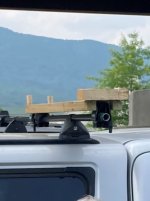I’m in the market for a new canoe. Started paddling about 3 years ago. I’m 63, 6’ and 200 lbs. I paddle rivers—not much for lakes. Paddle on flattish, broad, slower moving western US rivers which are shallow with cobbles and rocks during lower water which is most of the year, but they can be exciting during snowmelt with 10X volume and some 3-4’ waves. My first canoe is a Nova Craft 16’ Prospector in tuffstuff expedition layup. Bought it thinking the predominant use would be tandem day and tripping on my local rivers—Colorado, Green, Gunnison. Turns out I solo it more than tandem as my wife prefers to paddle a ducky when we day trip together. I go solo with buddies more often. Skill level is low but growing slowly—I‘d love to go to a paddling school next summer!
I find the NC Prospector to be a bit slow to maneuver at times and subject to wind. I flip to boat around to solo but the seats are pushed to the ends of the boat so far that its hard to get to the middle to solo from the pivot point and its pretty wide too. Plus it rides so high I use a 5 gallon jug in front for ballast which doesn’t help the maneuverability. I like the NCP depth/dryness and the cargo carrying capacity for tandem tripping with tons of gear, but I really want a dedicated solo boat. So I went looking and I found a Nova Craft Supernova. Put it on a local pond a few times but it felt so dang unstable. Sold it.
Looking for a different canoe for my solo day trips and for solo tripping. Mostly going to stick to the rivers mentioned above, but I’d like to expand horizons a bit and travel—maybe smaller rivers with so swift water and more maneuvering. After looking over the bottom of my NC Prospector I started thinking tougher layup so turned toward the Esquif lineup. Not sure thats necessary but the tuffstuff does have a few breaches that will need to be fixed. I was thinking the shorter 15’ prospectors would be nimbler than my 16’ prospector and the seats more centered for easier solo use. I discounted the Esquif Prospector sport as it is more like 16’ and I thought the additional rocker would cause wind problems. I briefly considered the Pocket Canyon but it seems too whitewater oriented. I havent ruled out the NC 15’ Prospector. Am I on the right track here?

